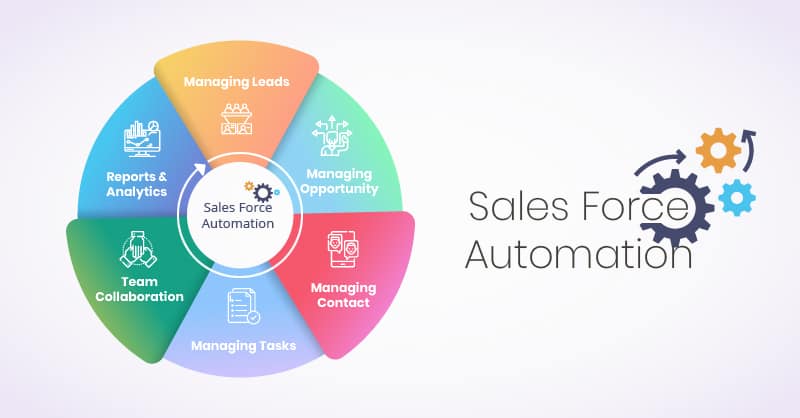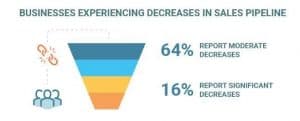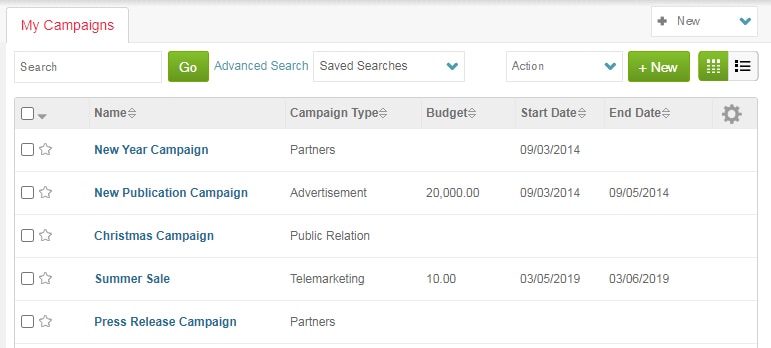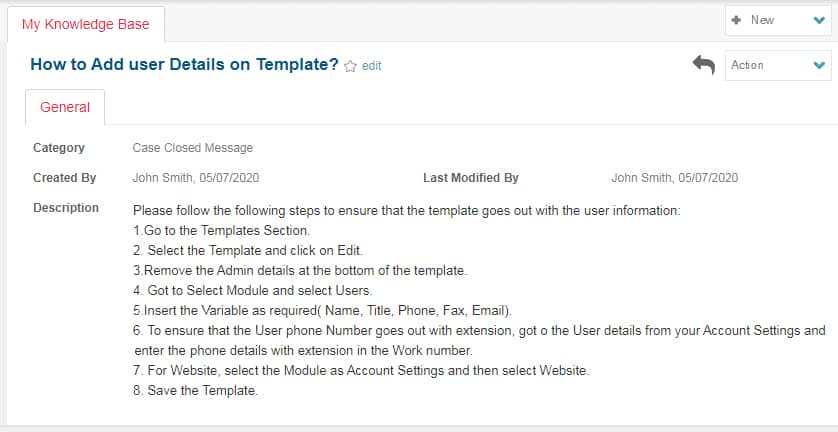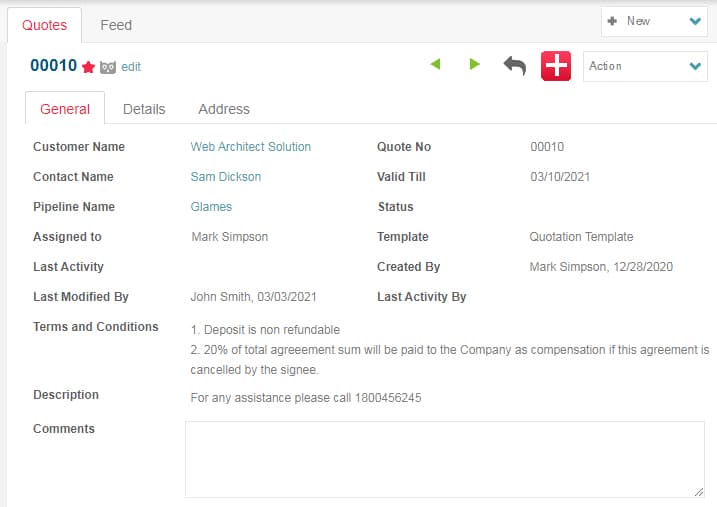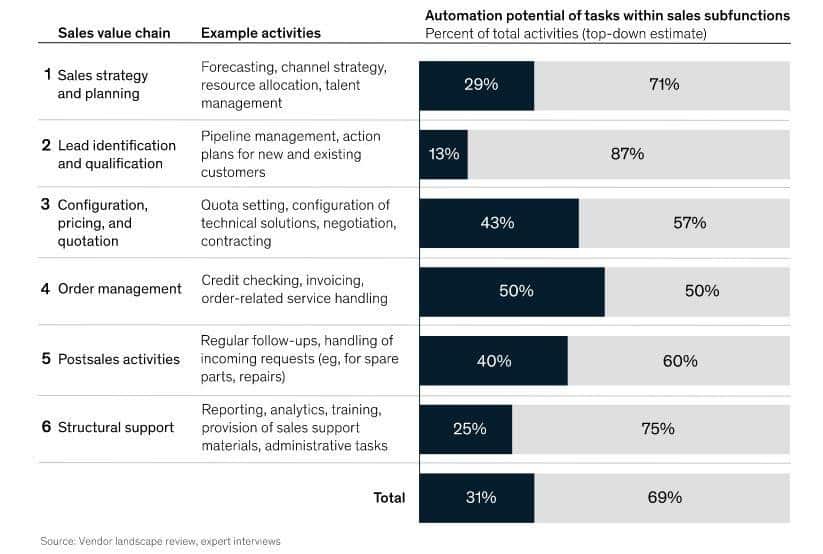As a small and medium business, in order to prosper and grow you need to invest pragmatically in the areas that can provide the greatest dividends, that is the reason more and more SMBs are implementing small and medium business CRM tools for generating steady revenue growth.
In fact, CRM software is a tool that not only helps businesses to stay organized and build superior relationships as a contact management software but it also pays back $8.71 against every single dollar spent on this tool. And that means a phenomenal 774 percent return on your investments.
Hence choosing an automated cloud-based CRM software solution is just not a smart business practice, but a CRM for small and medium businesses can easily transform your operations by increasing sales through lead scoring and thereby helping your employees to understand and support the customers and create optimal workflow processes for your teams.
As a small and medium business, in order to prosper and grow you need to invest pragmatically in the areas that can provide the greatest dividends, that is the reason more and more SMBs are implementing small and medium business CRM tools for generating steady revenue growth.
In fact, CRM software is a tool that not only helps businesses to stay organized and build superior relationships as a contact management software but it also pays back $8.71 against every single dollar spent on this tool. And that means a phenomenal 774 percent return on your investments.
Hence choosing an automated cloud-based CRM software solution is just not a smart business practice, but a CRM for small and medium businesses can easily transform your operations by increasing sales through lead scoring and thereby helping your employees to understand and support the customers and create optimal workflow processes for your teams.

Still, need further persuasions?
Do not worry, here are some of the other big reason why having a CRM software solution is a must for your small and medium business:
1. It Nurtures Leads and Increases Sales
Do you know that the most basic reason why small and medium businesses adopt a CRM for SMB is that this business growth technology helps to streamline and boost their revenue?
How?
Well, it all begins with lead nurturing and management of the lead after initial lead generation. Modern online CRM permits small businesses to capture more leads from their business websites, social media platforms, emails, etc., and then track those leads throughout the entire sales process.
With your small and medium business CRM stocked up and filled with new contacts, your sales reps can easily start nurturing prospective buyers in the sales pipeline with personalized and targeted campaigns until they are ready to purchase your brand’s offerings.
That means using a CRM your sales teams can not only prioritize the leads but also spend less time trying to persuade unqualified leads who are never going to pull the trigger by taking endless time for closing their deals.
Another big plus of purchasing a small and medium business CRM tool is that the software helps to deliver key insights so that you can make smarter decisions for your company in sales.
This is because a small business CRM software solution can promptly let you know which lead source drives most sales for your brand so that you can allocate more time and money where it is needed. Moreover, it is also a tool that can point out which sales reps in your team are stressed to hit their goals or shed light on what your long-term and short- term forecasts about sales look like so that new business growth ideas and strategies can be tested as per need.
Are you aware that late follow-ups are one of the main reasons for businesses losing customers or failing to convert prospective leads stored in their CRM database?
Now CRM solution helps the sales reps to provide their contacts with appropriate and automated follow-ups to turn present customers into long-term buyers of their brands easily.
2. It Helps You Understand Your Customers
You must be knowing that the best way you can serve your customers is by understanding exactly what they need. Rather say, you must understand your customer’s pain points even though it might seem like a monumental task to gather such information when you have thousands of customers in your database.
Now, this is exactly where CRM comes into play since it is a tool that can gather information about all your customers at a granular level and thereafter even analyze those data to gain valuable insights that might help your business to make more customer-centric and intelligent business decisions for your company.
CRM can track trends, identify opportunities, assess behaviors – all with a few clicks of a button.
Therefore small and medium business CRM tool is particularly useful for SMBs selling complex solutions or for startups with longer sales cycles.
This is because the constant data collection by the Enterprise CRM software allows your business to relentlessly perfect how you interact with each and every customer, since when months of customer-related data is effortlessly recorded and analyzed it allows businesses to understand the different decisions that guided the customers throughout their entire journey.
You can even use this information stored to improve your small businesses’ marketing strategies, tweak your email marketing campaigns, sales approaches, website designs until you can find the optimal way to reach your target audience in the marketplace.
Additionally, another way you can leverage the insight that you have gained through CRM is to create a more personalized experience for your customers.
This is because, when you have accurate oversight into the preferences and behaviors of your clientele, you can easily tailor messages or improve your offerings so that they align more closely with your customer’s expectations and needs, and thereby help develop more meaningful and deeper connections with your customers which can promote loyalty and increase chances of customer referrals for your brand.
3. It Improves Workflow
Irrespective of how small is your business, your marketing and sales processes will always have room for improvements.
Now, the reality here is that most businesses have a plethora of manual processes in their organization and use sticky notes and spreadsheets that kills productivity.
CRM software for small and medium business is a tool that can help to remove the bottlenecks and make it easy to create effective workflows you teams can stick to on a daily basis.
No matter if it is just automating flow-ups on new leads or delivering a reliable onboarding process for new customers, a CRM for SMB can boost your entire team’s efficiency right from lead generation, through sales to customer support – which leads me to my next point.
4. It Escalates Customer Support
Now providing world-class support is one of the strongest pillars for every small business and startup, which not only impacts the retention rate of their customers but also their revenue.
But how can you deliver a consistent world-class customer experience?
Well, you can easily do it by providing your support team’s instant access to detailed information about each and every customer.
Allow your support reps to discover your customer’s online history, their purchase and order information, and their past interactions with your company so that your support reps can truly understand what each customer has gone through.
Now a big advantage of CRM software is that it is a tool that can collect all customer data inside a single repository, which can make it easier to segment your customers based on their specific interests and needs.
5. It Maximizes Resources
We all know that most owners of small and medium businesses are too familiar with the challenge of wearing multiple hats.
In the present business landscape, even mid-sized companies struggle to make the most out of limited resources.
Now as technology does the heavy lifting marketing automation in a robust small business CRM allows a company of any size to do more with fewer resources in their payrolls.
Therefore using a small and medium business CRM tool even companies operating on a skeleton crew can provide high-level service and remain competitive with bigger businesses.
As it has been mentioned even earlier, CRM software can take care of the majority of repetitive admin tasks, keep records and make timely follow-ups with the contacts in the CRM software’s database, while providing you as an entrepreneur to run your business, attend conferences and meetings or provide demos to prospective customers that are ready to buy.
6. It Enables You to Develop Best Practices
Finally, the best CRM software for small and medium businesses can help SMBs to identify and implement best practices to make sure that every employee in their organization remains on the same page and that the business runs smoothly like a well-oiled machine.
Therefore CRM not only helps businesses to find ways to maximize their productivity but also aids in keeping costs down and makes SMBs operate profitably.
It helps in building best practices for making small businesses’ new employee onboarding processes easier, bring them up to speed faster, and provide new entrants with the appropriate information and tools they need to do their job effectively.
Conclusion
Hence with the best small and medium business CRM tool in place your SMB can not only drive more sales, but it can help to delight your customers and make your business more productive.
Therefore with everything, a CRM can do for your business, can you really afford not to have one for finding rapid sales and revenue growth?
